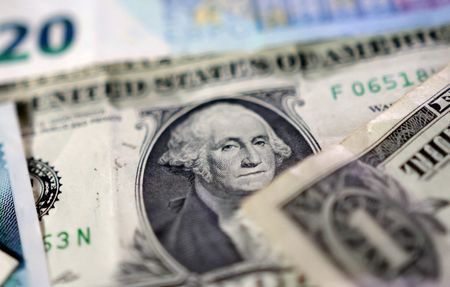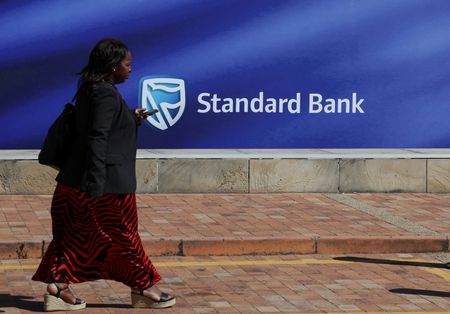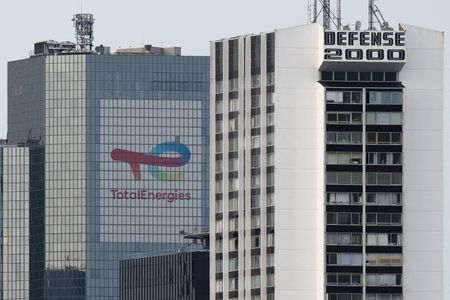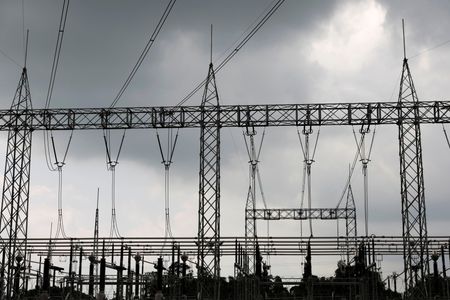By Naomi Rovnick and Jaspreet Kalra
LONDON/SINGAPORE (Reuters) -U.S. stagflation fears seeped into global markets on Thursday after surprisingly hot inflation data applied heavy pressure to U.S. Treasuries and sparked selling of government bonds everywhere from Germany to Japan.
Wall Street stocks took a hit too, with futures contracts tracking the domestically-focused Russell 2000 share index, which dropped 1.2% in the minutes after official data revealed an unexpectedly large jump in U.S. producer prices.
The producer prices index, which investors have been watching for signs of pipeline inflation pressures from U.S. President Donald Trump’s trade tariffs, rose 0.9% in July from the month before, trouncing consensus forecasts for a 0.2% gain.
European stocks held on to gains from earlier in the day and were last 0.2% higher, while Wall Street’s S&P 500 index was set to fall about 0.4%.
Two-year Treasury yields, which track monetary policy expectations, leaped by 4.3 basis points (bps) immediately after the data to 3.73% as expectations for jumbo Fed rate cuts faded.
FOLDING BETS
Money markets showed traders still almost unanimously expect the Federal Reserve to lower borrowing costs next month after keeping its main funds rate at 4.25%-4.5% since December.
But bets on a bigger 50-bp rate cut, encouraged by comments from U.S. Treasury Secretary Scott Bessent on Wednesday, quickly faded out of the market.
The five-year Treasury yield climbed about 2 bps as the price of the debt fell, and last traded at 3.798%.
“Inflation is starting to come through. It’s not massive yet but that could certainly continue in coming months,” Russell Investments global chief investment strategist Paul Eitelman said.
DEBT ROUT
The U.S. dollar, which had weakened on rate cut fervour, ticked higher but remained pinned near multi-week lows against major currencies.
An index tracking the greenback against peers including the euro and Japan’s yen edged 0.3% higher. The euro dropped 0.4% to $1.166.
European stock indices mostly traded calmly, with the main STOXX index up 0.2% and Germany’s DAX adding 0.4%
UK and euro area government bonds sold off alongside Treasuries.
The benchmark 10-year Bund yield was up 2.4 bps to 2.27% and Britain’s equivalent gilt yield rose 3.7 bps to 4.626%.
RALLY IN QUESTION
MSCI’s global share index edged down 0.2% after hitting all-time peaks for the two previous sessions, in a rally led by a strong corporate earnings season and anticipated monetary easing.
Surprisingly weak monthly U.S. jobs data on Aug. 1 had kept the focus on the softening U.S. economy and the potential for rapid rate cuts. But while markets overall had been expressing a glass-half-full approach to the U.S. economy, big investors have been preparing for inflation to rise.
About 70% of global investors expect U.S. stagflation, where growth slows as the rate of consumer price rises accelerates, to become the dominant market narrative within three months, a Bank of America survey found this week.
Elsewhere, commodities markets were showing some signs of geopolitical stress ahead of Friday’s summit between Trump and his Russian counterpart Vladimir Putin.
Trump on Wednesday threatened “severe consequences” if Putin did not agree to peace in Ukraine and has also floated the idea of a second summit that would include Ukrainian President Volodymyr Zelenskiy.
Brent crude, the global oil marker, rose from almost a two-month low with a 1.2% jump to $66.39 a barrel and U.S. crude added 1.3% to $63.43.
But spot gold prices, which tend to rise when investors focus on geopolitical and inflation risks, bucked the market trend and edged 0.2% lower to $3,346 an ounce.
(Reporting by Naomi Rovnick in London and Jaspreet Kalra in Singapore; Editing by Muralikumar Anantharaman, Kim Coghill, Christina Fincher and Amanda Cooper)











